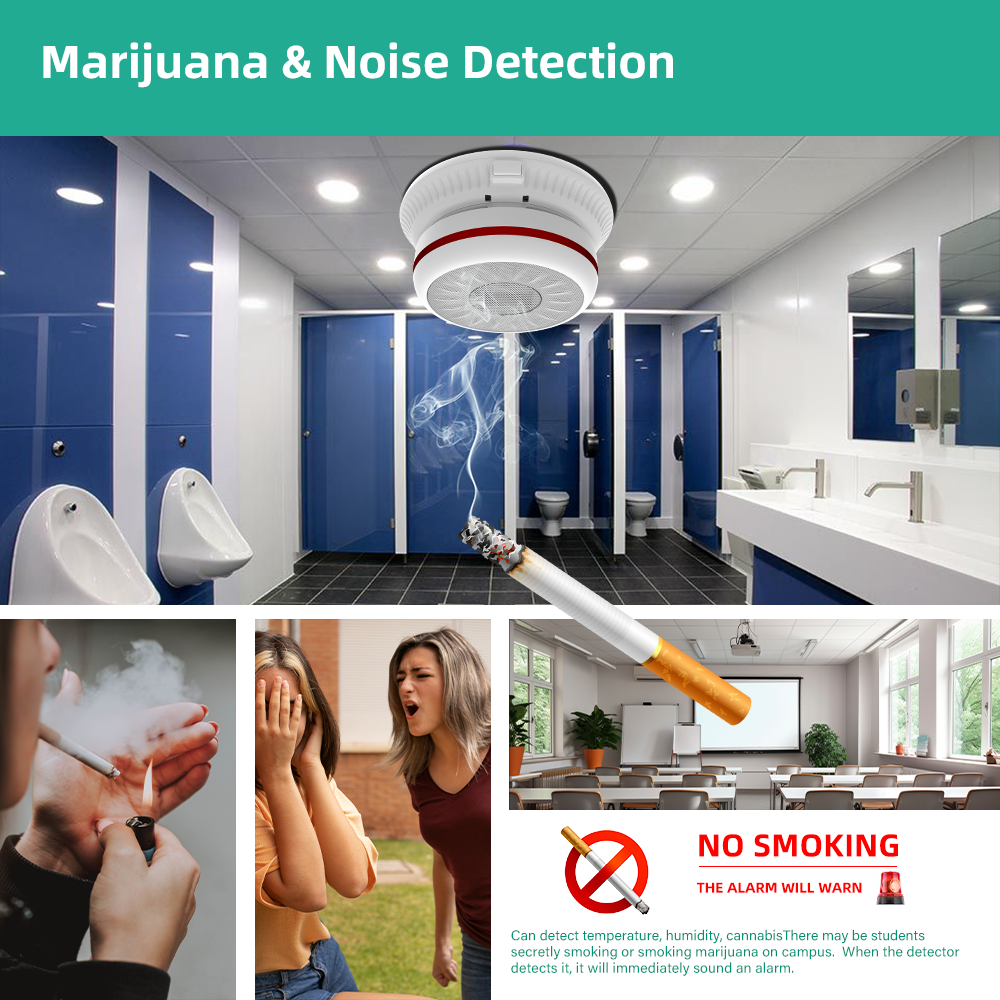Every three minutes in American schools, a nefarious issue is exposed: A student has been caught vaping. Health professionals consider teenage vaping as a full-blown epidemic. According to CDC more than 40% of high school students and 80% of middle schoolers had tried electronic cigarettes. Nearly all (99 percent) of them have nicotine, an addictive chemical which rewires developing brains and often is a way to get into smoking cigarettes. Teachers, parents and administrators are being put under more pressure to get involved. Vape detectors are a sophisticated device that has become an essential piece of equipment for campuses. The top two brands, Triton and 3D Sense stand out as vape detectors that schools can use which do more than simply sound an alarm.
How do Vape Detectors Work: Precision Without Intrusion
The Triton Ultra Smart Safety is a modern vape detector that does not solely rely on video or audio recordings. This guarantees complete privacy, while also providing useful intelligence. It utilizes particulate sensors that analyze the air in real-time. When vape aerosols or cigarettes smoke, marijuana vapor, or even masking agents (like heavy perfumes) are detected, the device triggers instant alerts by email or text to the designated personnel. False-positives remain extremely minimal. Administrators can be sure that all notifications need immediate attention.

A single unit could cover the entire hallway, bathroom or locker and hallway, which makes the installation of this device cost-effective. Triton customers typically report the vaping rate dropping within five weeks. What is the reason? Data-driven deterrence. Triton Cloud Dashboard gives an “hotspot” of places vaping is taking place typically. Principals can then send security guards or hall monitors to where they’re most needed.
Beyond Detection: Occupancy Visualization and Loitering Control
What sets Triton apart from basic vape detectors is its patent-pending occupancy visualization technology. With no sound or images it is the ULTRA sensor tracks people count and their time of stay in vulnerable locations. Administrators are able to see colored heatmaps that show that bathrooms have transformed into the hub of social interaction and are prime spots where vaping is common.
Stanford Medicine research emphasizes the dangers. Students who use e-cigarettes are 5 times more likely to contract COVID-19. In reducing the amount of congregation, vape detectors for schools can improve air quality, and reduce risk of transmission for the airborne pathogens. Following the outbreak they have become indispensable due to their dual benefits.
Converting data into discipline and Dialogue
Numbers tell a compelling story. Triton Reports module compiles quantifiable data about incident timestamps. The locations, as well as frequency changes. This data is made available to school boards. Parents groups. And even the students themselves. There is a gradual loss of doubt when the campus has reported a 60% decrease in detections since detectors were set up. Parents will see that the students are involved; they will also understand consequences.
Teachers can increase the impact of their message through announcing vape smoke detectors since day one. 3D Sense, for example, markets itself explicitly as a preventative. The guidance documents recommend that students be made aware that the air itself is watching their movements. Peer accountability follows: the social impact of alerting students often proves more powerful than any presentation.
A Multi-Front Strategy Schools Can’t Ignore
Vape detectors are not the only tool that can stop vaping. They are part of a comprehensive strategy.
Monitoring – Real time alerts capture events as they happen.
Education – Research based on evidence-based practices fuels curricula that discourage smoking.
Deterrence – Visible signage and the consequences that are known to change behavior.
Discipline – Hotspot data justifies targeted enforcement.
Support schools pair the detections and cessation programs for students who are struggling.
The CDC stresses that reversing the trend will require “buy-in from parents, educators as well as the general public.” Vape detectors are the missing link: immediate, objective feedback that converts good intentions into tangible results.
Deployment Made Simple
Triton Cloud Dashboard allows you to add devices to your account in just two minutes. Administrators can modify notification rules and add contacts. One demo will show you how easy it is. You can set up an appointment to see live hotspot maps and graphs in the action.
Conclusion
Every puff that is ignored could be the beginning of dependence for a long time. Every undetected bathroom gathering risks both health and safety. Vape detectors for schools like Triton and 3D Sense offer more than surveillance. They provide security, intelligence, and evidence of progress. Campuses that install them don’t just respond to the growing vaping epidemic but they also take control of the issue.
These tools are able to turn vague concerns into tangible victories. They come with a sensor within each space, occupancy reports that are secure for privacy, and fast alert systems. In a world where 40 percent of students in high school have already tried it, and middle school numbers climb each day, waiting is no longer an option. The air at your school has evidence, make sure you’re the first one to understand what is being said.

